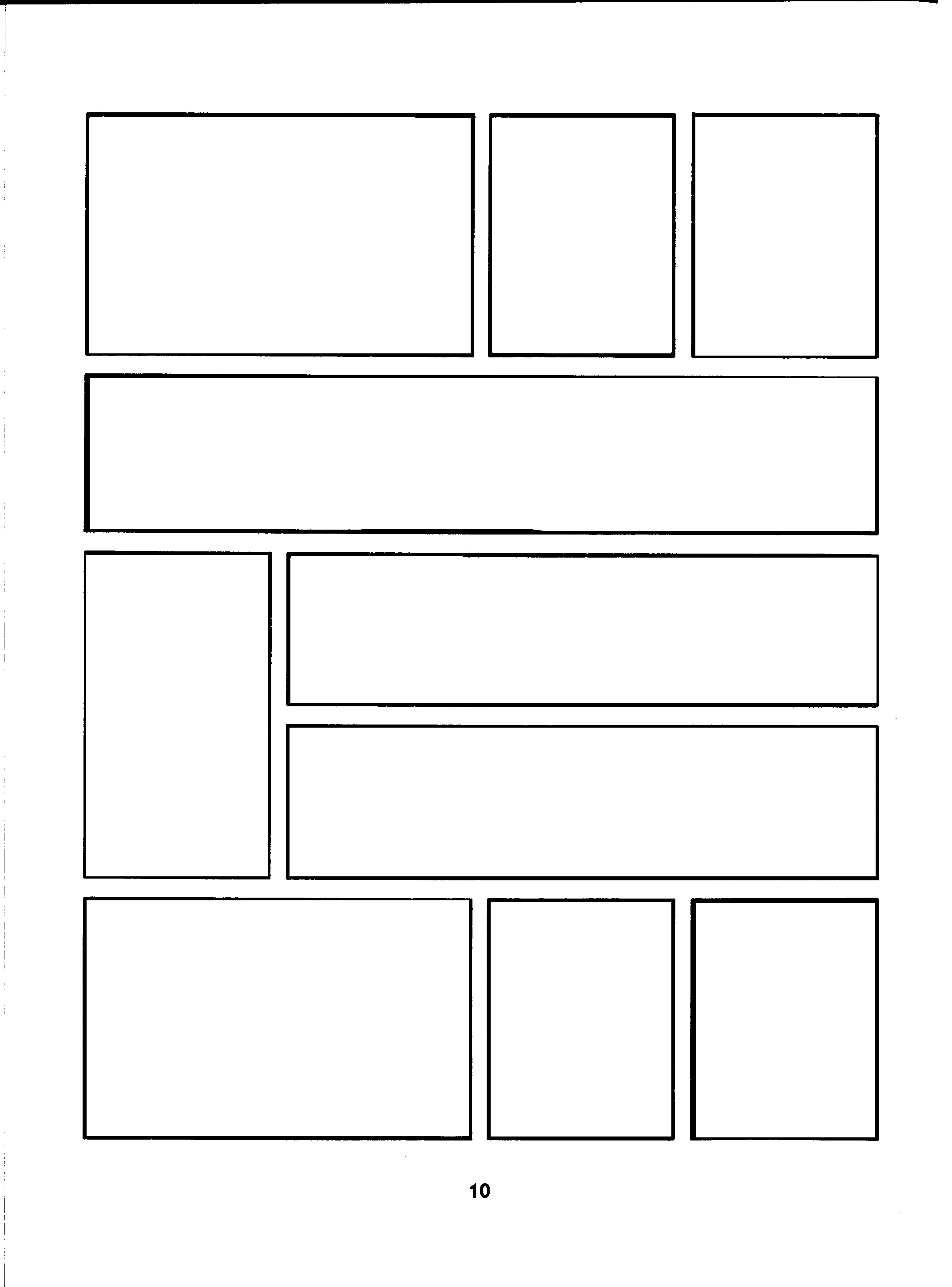Image Model
Team Members: Chris Hagenah, Katie Kelp-Stebbins, Dan Reynolds
Model Comparisons
Model I:
- Separation of icon and text
Page 5 Original:

Page 5 Text Removed:

Page 6 Original:

Page 6 Text Removed:

Interpretation:
The mode of deciphering an iconic image differs from that of deciphering a textual, abstract image. Notice how removing the text also removes a covalent reading required for understanding both image and text. In the original page, the word balloons help us understand the temporality of the panel by cuing us to how long a spoken sentence lasts in time in the diegetic world of the panel. The aural cues, such as the “ch ch ch” of the train provide an extra aural layer (i.e. the change in volume is represented by a lower-case, smaller "ch" signifying low volume, and then an upper-case, larger "CH" signifying high volume) that fills out the world and sets a particular tone which, once the text is removed, evaporates. With no sound the panel becomes inert. Even more, the changes in point-of-view are no longer narrated by text (i.e. we don’t have an arrow showing us whose mouth the words are coming from), and thus the narration is only guided by iconic image (such as the direction of the glances in panel 6). Separated, these representational modes are inert, but combined they render the comic panel into resonating, but highly distinct modes. For instance, the two dimensional space of the text-filled word balloon (a pure abstract space) completes the three dimensions of iconic image (a geometrically consistent and realistic iconic image) that is unique and specific to comics.
Model II:
Page 7 Original:

Page 7 With No Frame:

Interpretation:
First, removing the border reveals the importance of the word balloon’s placement within the panel and frame. For example, Marthe's word balloons are more open than Kurt’s (this is true regardless of the presence of the frame, but is made apparent by its absence). Consider the word balloon where she says, "I don't really make things up. I draw things I see." With the removed border, this speech is more a part of the whole page composition, open to the white space of the page and no longer bounded by the frame of the panel. It is thus a part of the page in an organic, incorporated way. The speech’s enunciation becomes markedly different. Second, the tone changes, demonstrated by the contrast between dark and light that the panel’s framing provides. With no frames, the contrast is significantly diminished, and the white becomes dominant. Third, the varying composition of the shots is more disorienting. For example, panel 4 is a close-up, but panel 5 is a medium shot. With the frame in place, this movement is more logical, in that we understand the change in perspectives. With the frame removed, this movement is vague, and unless we pay more attention, we might confuse the two shots as one. The frame therefore acts as a type of clarifying marker, dividing the space of the panel from both the space of the other panels as well as the page itself. It is then both a strong narrative device as well as a stylistic authorial mark. (As an example, view Will Eisner’s distinct use of framing.)
Model III:
- Compression of panels/ gutter space
Page 9 Original:

Page 9 With Gutter Removed:

Interpretation:
The deformation reveals an aesthetic choice not to embed panels. Instead, Berlin’s form coheres to a strict separation of panels. The style of gutter Lutes consistently employs throughout the work, a tightly geometric, almost rigidly rectangular use of panels, thus becomes apparent with its removal. Also, in terms of composition, because the author works only in black and white, the reader makes optical associations in the compressed page that she wouldn't with the original. For example, notice the bleeds that exist between the panels that weren't there to begin with. Furthermore, by spatially positioning the panels more closely, the time scheme seems to bleed as well. The temporal scheme takes on an urgency, making the scene appear to move faster. Lastly, the gutter’s resilience is the most impressive result of this model. Despite compressing the panels together in an attempt to remove it, the gutter remains resistant to removal in that we can still clearly distinguish between panels.
Model IV:
Page 10 Original:

Page 10 Blank Panels:

Page 10 Gutter Isolated:

Page 10 Gutter Isolated and Filled in Black:

Interpretation:
The isolation of the gutter demonstrates the foundation of the page's construction. Patterns emerge that one wouldn't recognize without isolation of the gutter. For instance, in the original, the symmetries in the page are unclear due to the contrasts in each panel. But remove the content of the panel, and symmetries begin to clarify. Notice that the upper line of panels is symmetrical to the lower. In the middle three rows, the one vertical line disrupts the symmetry of those three lines. The gutter stands on its own iconic status that seems almost invisible in its original context. By isolating the gutter, we understand better how content is balanced within each page, and how imagery takes precedence over the geometry and symmetry of the panel and gutter space.
Comments (0)
You don't have permission to comment on this page.